
Normal Anion Gap Metabolic Acidosis Mnemonic
The anion gap is a measurement of the difference — or gap — between the negatively charged and positively charged electrolytes. Each of the above electrolytes is individually measured in a comprehensive metabolic blood test panel and electrolyte blood test panel. Laboratory scientists then calculate the anion gap based on those measurements.
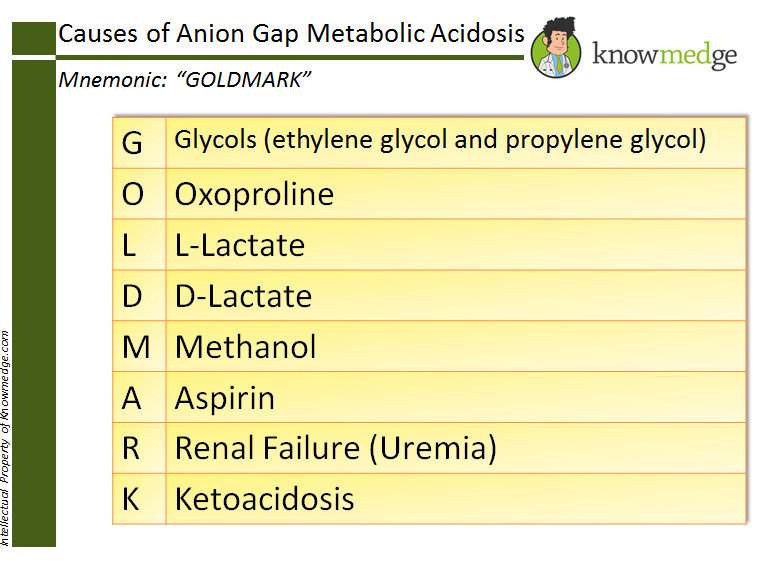
Medical Mnemonics Causes of Anion Gap Metabolic Acidosis “GOLD MARK” USMLE / Internal
The concepts underlying the clinical use of the anion gap (AG) and those disorders associated with its alteration are reviewed and stress is placed upon the utility of the AG in defining the cause of the acidosis, and as a guide to therapy in certain organic acidoses. 377. Semantic Scholar extracted view of "GOLD MARK: an anion gap mnemonic for.

Skeleton Key Group Case 18 Filling in the Gap Renal Fellow Network
GOLD MARK: an anion gap mnemonic for the 21st century. GOLD MARK: an anion gap mnemonic for the 21st century. GOLD MARK: an anion gap mnemonic for the 21st century Lancet. 2008 Sep 13;372(9642):892. doi: 10.1016/S0140-6736(08)61398-7. Authors Ankit N Mehta, Joshua B Emmett, Michael Emmett. PMID:.

clinical clerkship mnemonics
A mnemonic to remember the commonest causes of anion gap metabolic acidosis is: GOLDMARK Mnemonic G: glycols (ethylene glycol and propylene glycol) O: oxoproline L: L-lactate D: D-lactate M: methanol A: aspirin R: renal failure K: ketoa.
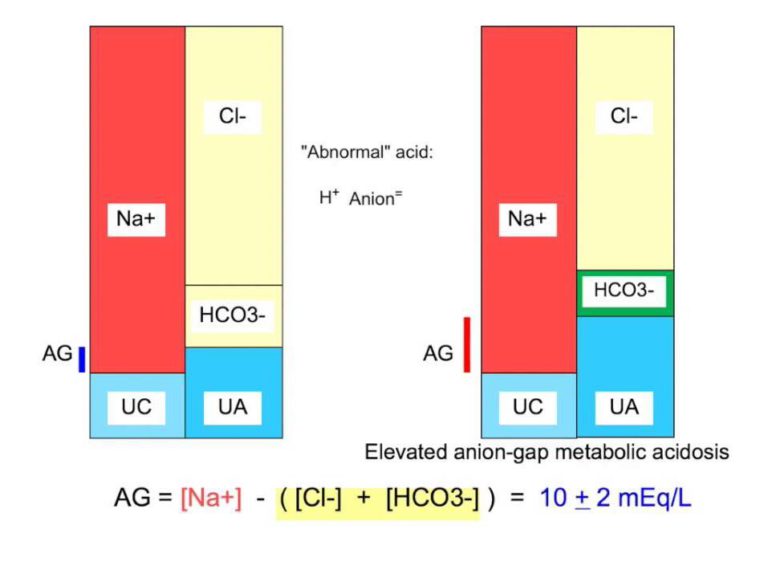
Anion Gap Meaning, Symptoms, Causes, Treatment and More
More recently a new mnemonic has been suggested to update new our understanding of anion-gap generating acids. The updated mnemonic "GOLD MARK" was proposed in a 2008 article in The Lancet. G - Glycols (ethylene glycol and propylene glycol) O - Oxoproline; L - L-Lactate; D - D-Lactate; M - Methanol; A - Aspirin; R - Renal Failure
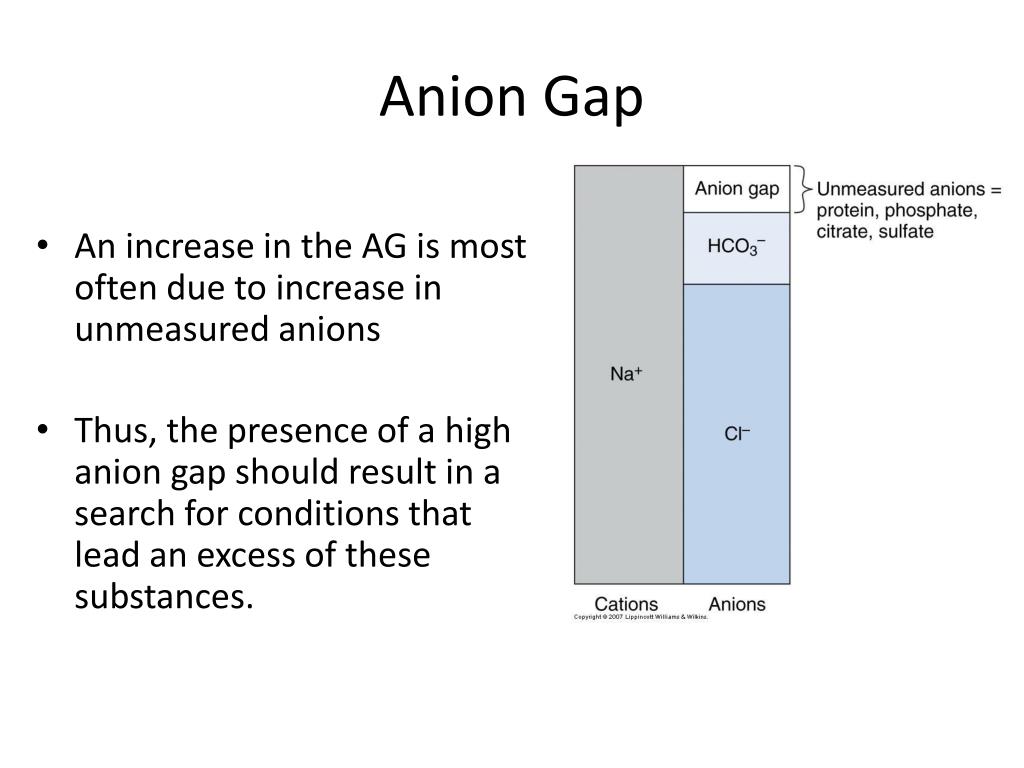
PPT Anion Gap PowerPoint Presentation, free download ID2865703
A helpful mnemonic called "GOLDMARK" can be used when evaluating causes of elevated anion gap metabolic acidoses such as in this case [5]. These include glycols (ethylene and propylene.

ABG Interpretation The Anion Gap (Lesson 5) YouTube
the basis of an anion gap calculation (Na+[Cl-HCO 3 -]): the high-anion-gap metabolic acidoses, and the normal-anion-gap, or hyperchloraemic, metabolic acidoses. Two popular mnemonics are often used to remember the major causes of the high-gap metabolic acidoses. The fi rst is KUSMALE (a useful misspelling of Adolph Kussmaul's name), which

The anion gap; its merits and demerits Deranged Physiology
The GOLDMARK mnemonic for anion gap metabolic acidosis is more useful. GOLDMARK mnemonic for anion gap metabolic acidosis; Glycols (ethylene glycol & propylene glycol) Oxoproline (metabolite of acetaminophen) L-lactate. D-lactate (acetaminophen, short bowel syndrome, propylene glycol infusions for lorazepam and phenobarbital)
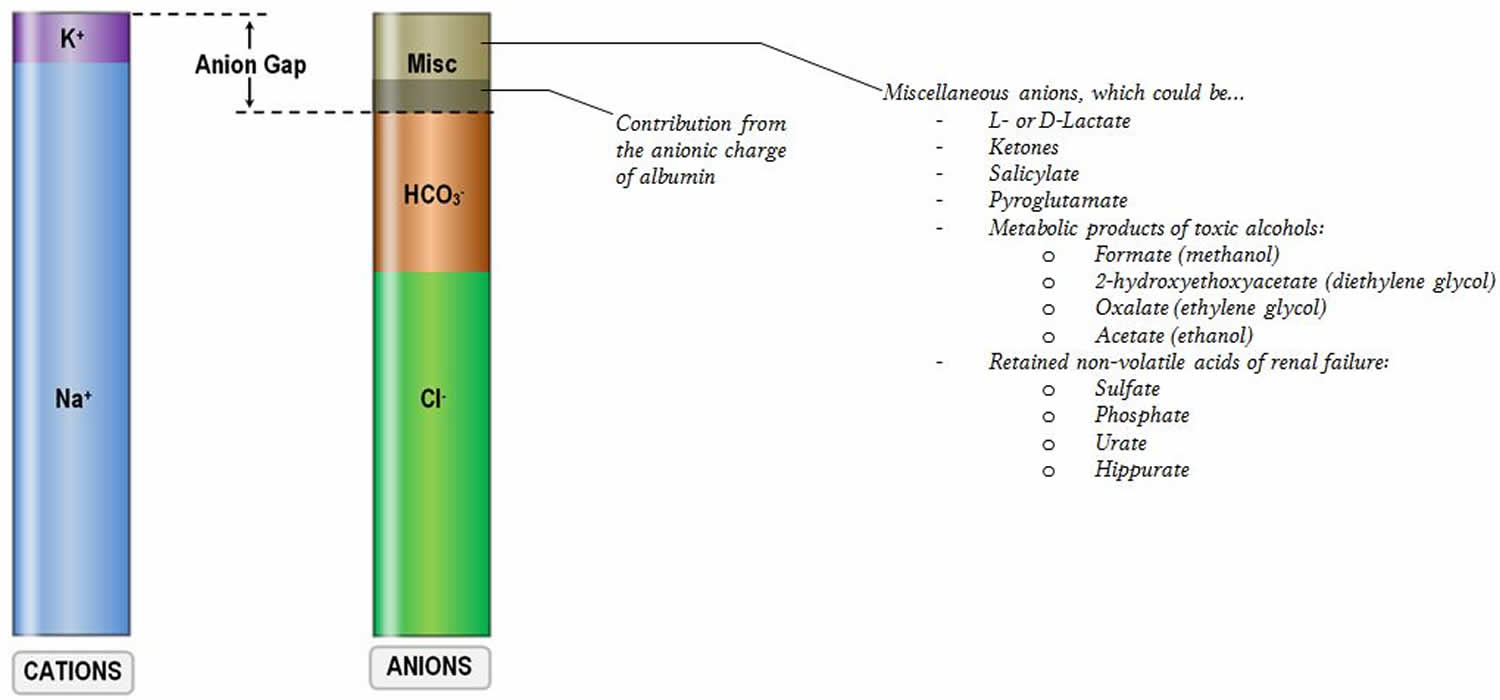
Anion gap calculation, anion gap blood test & causes of high or low anion gap
High-Anion-Gap Metabolic Acidosis During a Prolonged Hospitalization Following Perforated Diverticulitis: An Educational Case Report. Cecilia Farfan Ruiz A , Sriperumbuduri S , Shaw JLV , Clark EG. Can J Kidney Health Dis, 9:20543581221129753, 28 Oct 2022. Cited by: 0 articles | PMID: 36325264 | PMCID: PMC9619282. Free to read & use.

Medical Mnemonics
The acronym GOLDMARK, which was proposed in 2008, is the most frequently used . Based on the clinical presentation and initial laboratory results at time of admission and using the GOLDMARK-acronym, 5-oxoproline and D-lactate were considered as potential causes of the raised anion gap metabolic acidosis.

The Anion Gap in Metabolic Acidosis YouTube
High anion gap metabolic acidosis is a form of metabolic acidosis characterized by a high anion gap (a medical value based on the concentrations of ions in a patient's serum). Metabolic acidosis occurs when the body produces too much acid, or when the kidneys are not removing enough acid from the body. Several types of metabolic acidosis occur, grouped by their influence on the anion gap.

High Anion Gap Tool Medical mnemonics, Medical laboratory science, Nursing mnemonics
High anion gap metabolic acidosis (HAGMA) is a subcategory of acidosis of metabolic (i.e., non-respiratory) etiology. Differentiation of acidosis into a particular subtype, whether high anion gap metabolic acidosis or non-anion gap metabolic acidosis (NAGMA), aids in the determination of the etiology and hence appropriate treatment.[1][2][3][4]
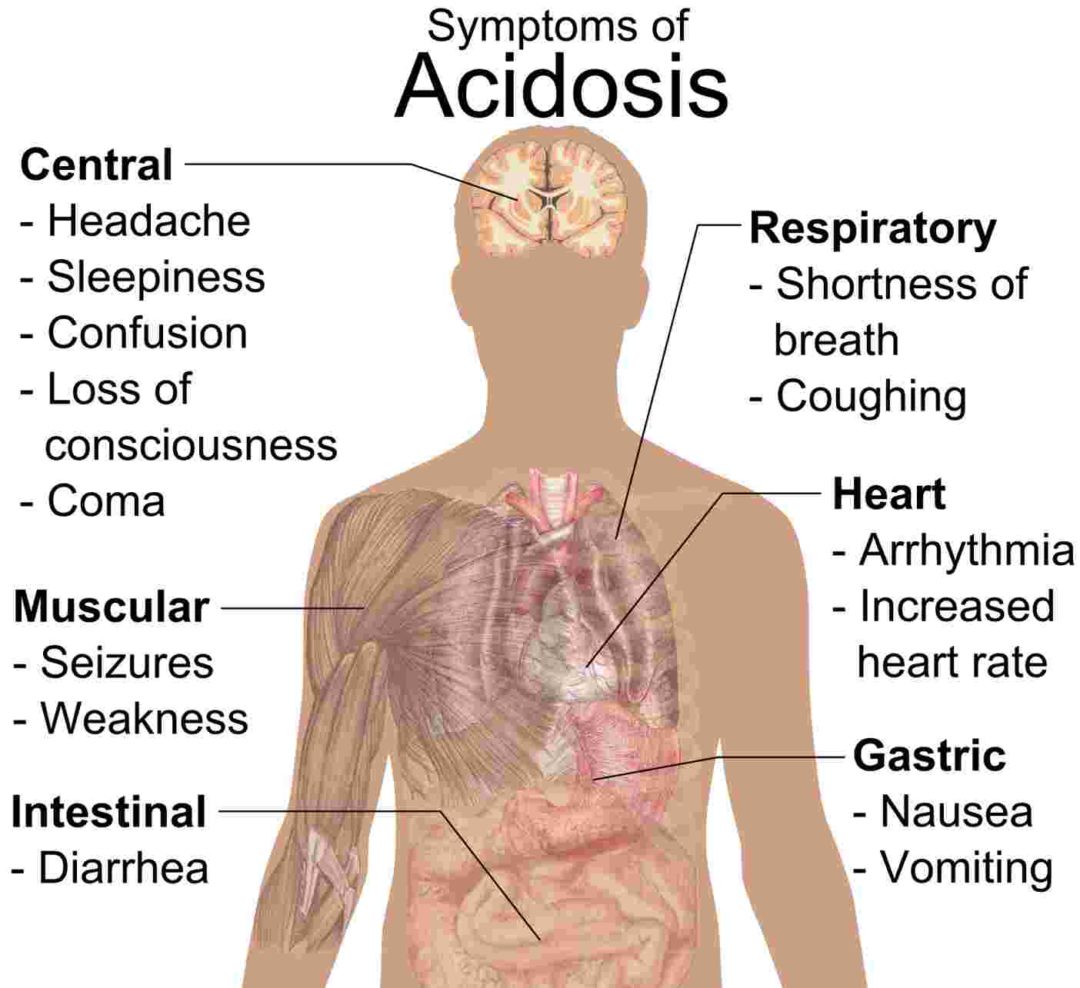
Anion Gap Meaning, Symptoms, Causes, Treatment and More
The GOLDMARK mnemonic is helpful in recalling causes of a HAGMA (Table 2).[[5]] Table 2: GOLDMARK mnemonic showing causes for a high anion gap metabolic acidosis.. Diagnosis requires clinical suspicion based on raised anion gap, exclusion of more common causes and the presence of relevant risk factors.[[3]] Formal diagnosis of pyroglutamic.

Acid Base Disorders Blog of Dr. Agnibho
A useful mnemonic for the differential diagnosis of increased anion gap metabolic acidosis is GOLDMARK (glycols [ethylene glycol and propylene glycol], oxoproline, L-lactate, D-lactate, methanol, aspirin, renal failure, and ketoacidosis) (Table 21-13). + + Table 21-13. Common causes and therapy for increased anion gap metabolic acidosis..

Anion gap calculation, anion gap blood test & causes of high or low anion gap
The most common causes of high anion gap metabolic acidosis (HAGMA) are listed in Table 1. They are arranged as the mnemonic "GOLDMARK" (Glycols [ethylene, pro-pylene, and diethylene], 5-Oxoproline [acetaminophen], L-Lactic Acid, D-Lactic acid, Methanol, Aspirin, Renal fail-ure, Ketoacidosis). In contrast, when metabolic acidosis is due to.
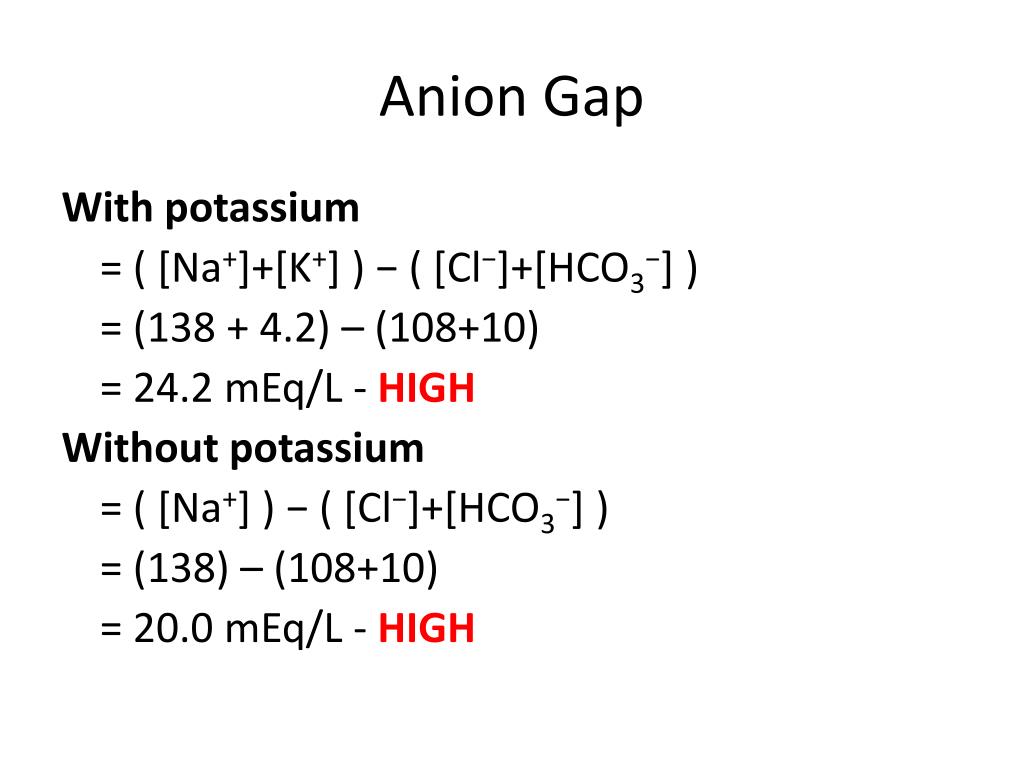
PPT Anion Gap PowerPoint Presentation, free download ID2928972
Anion gap is calculated as (Na - Cl - Bicarb). Nothing fancy, no corrections for anything (glucose, albumin, potassium, etc.). More discussion of the anion gap in the chapter on diagnosing acid/base problems here. Elevated anion gap is concerning, because many causes of this are immediately life-threatening. (Unlike, for example, non-anion.